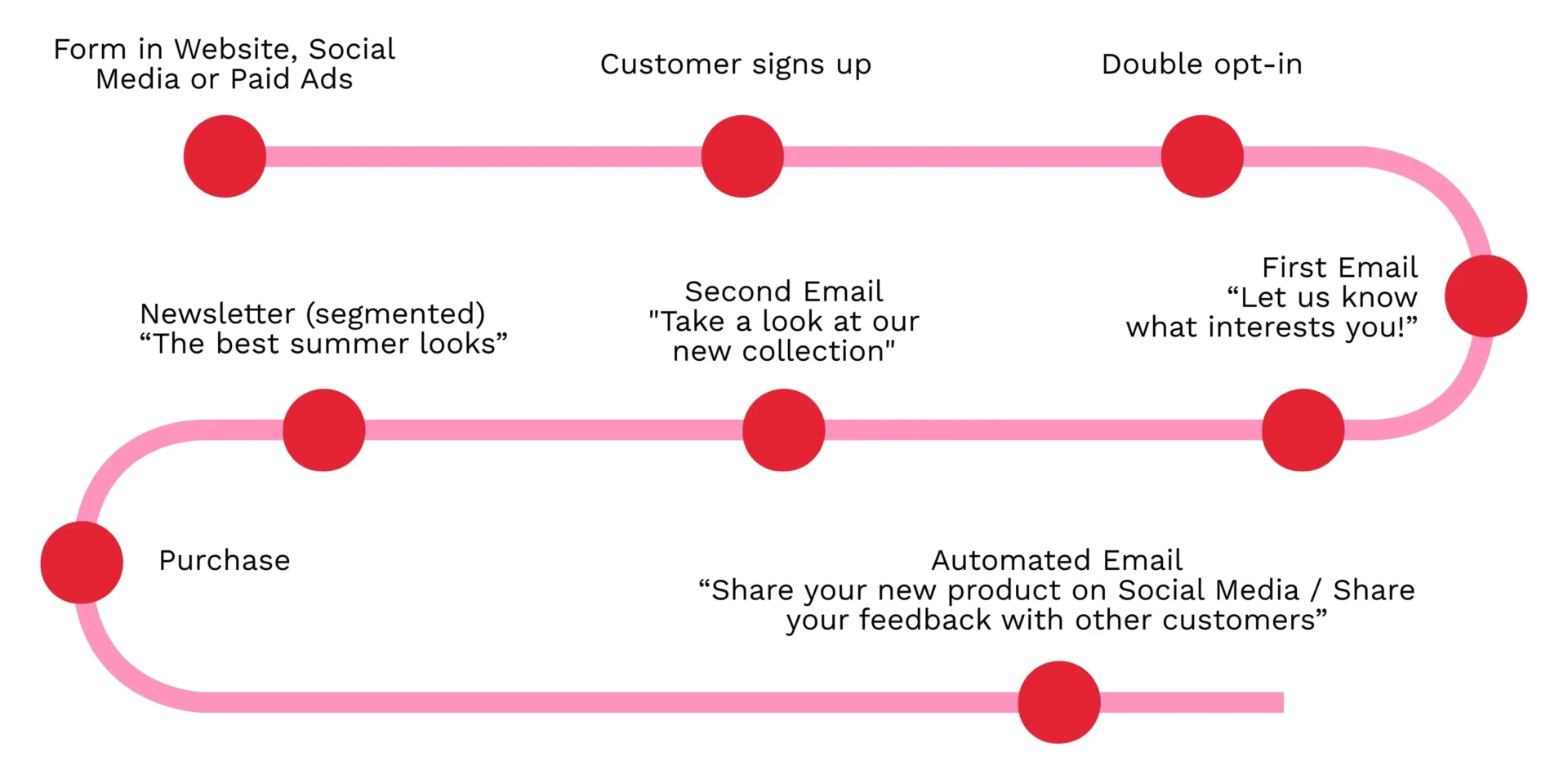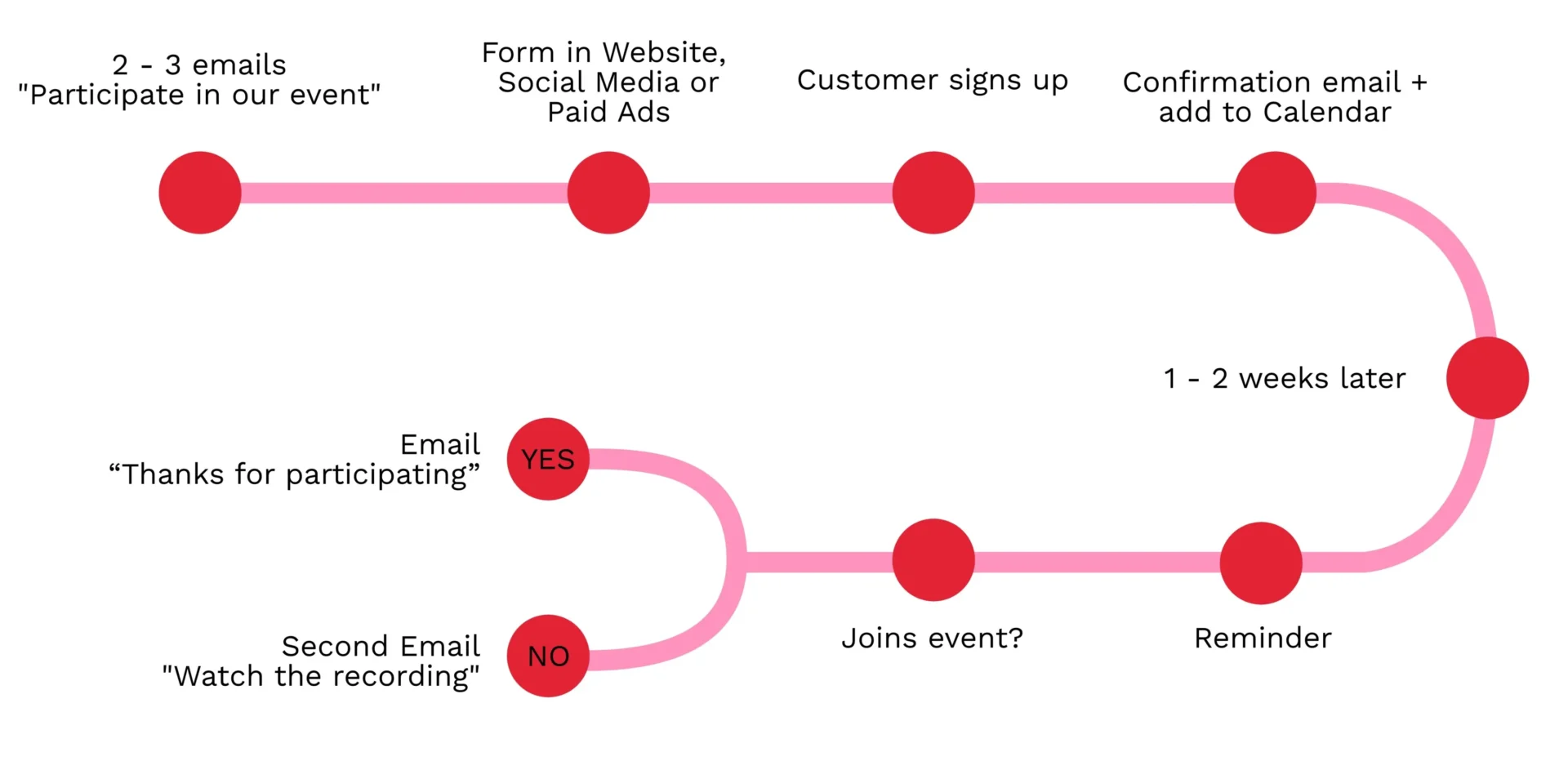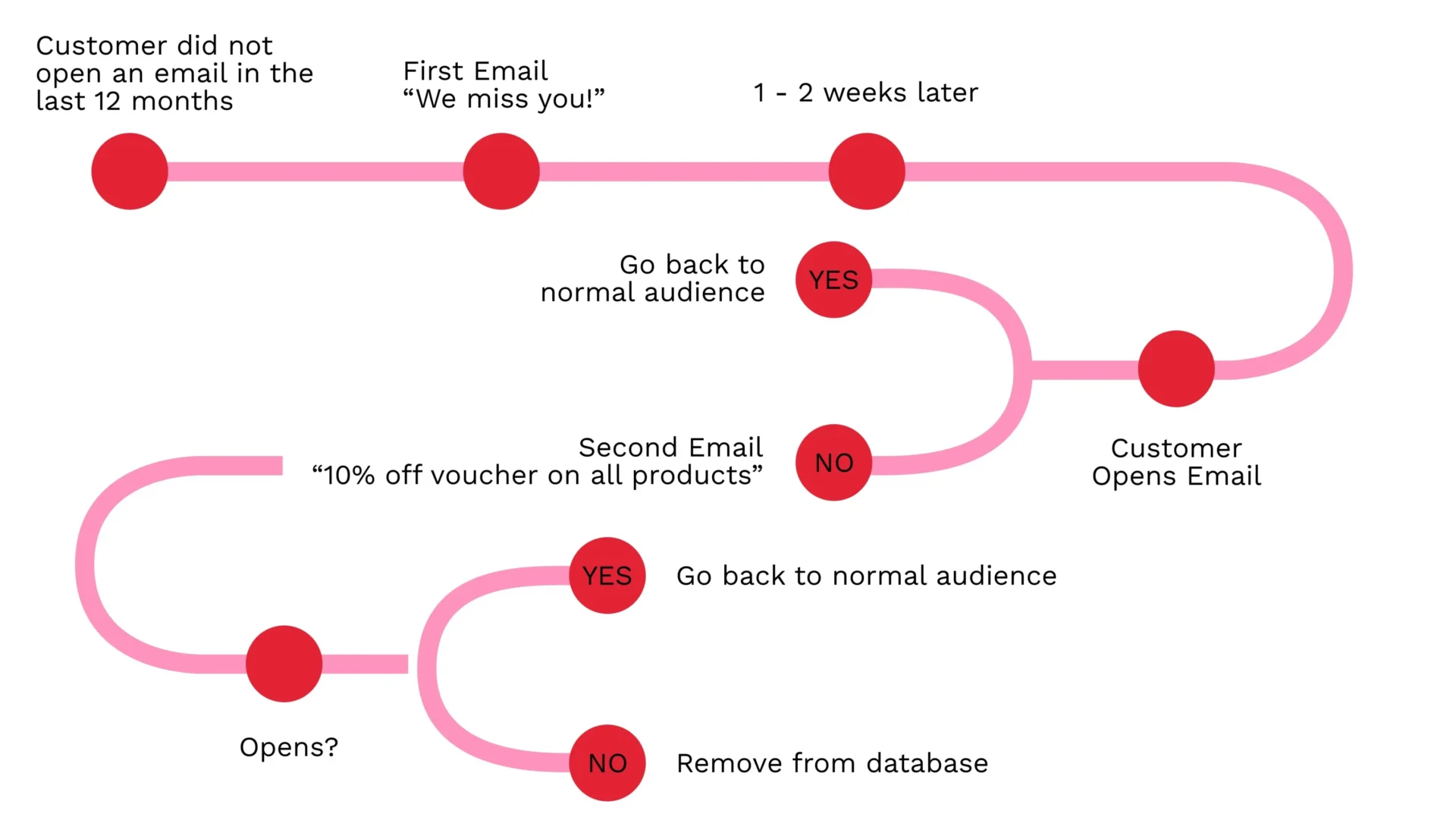Email marketing automation not only responds to specific dates, but also uses customer data to automatically send personalized emails triggered by specific actions or behaviors—for example, clicking on a product or abandoning a purchase. In this way, recipients receive only content that is really relevant to them.
Email marketing can be used at different stages of the customer journey and to achieve a variety of goals. Whether you are contacting your customers for the first time, inviting them to an event, or trying to win them back after a long period of radio silence, we have compiled the most important use cases.






